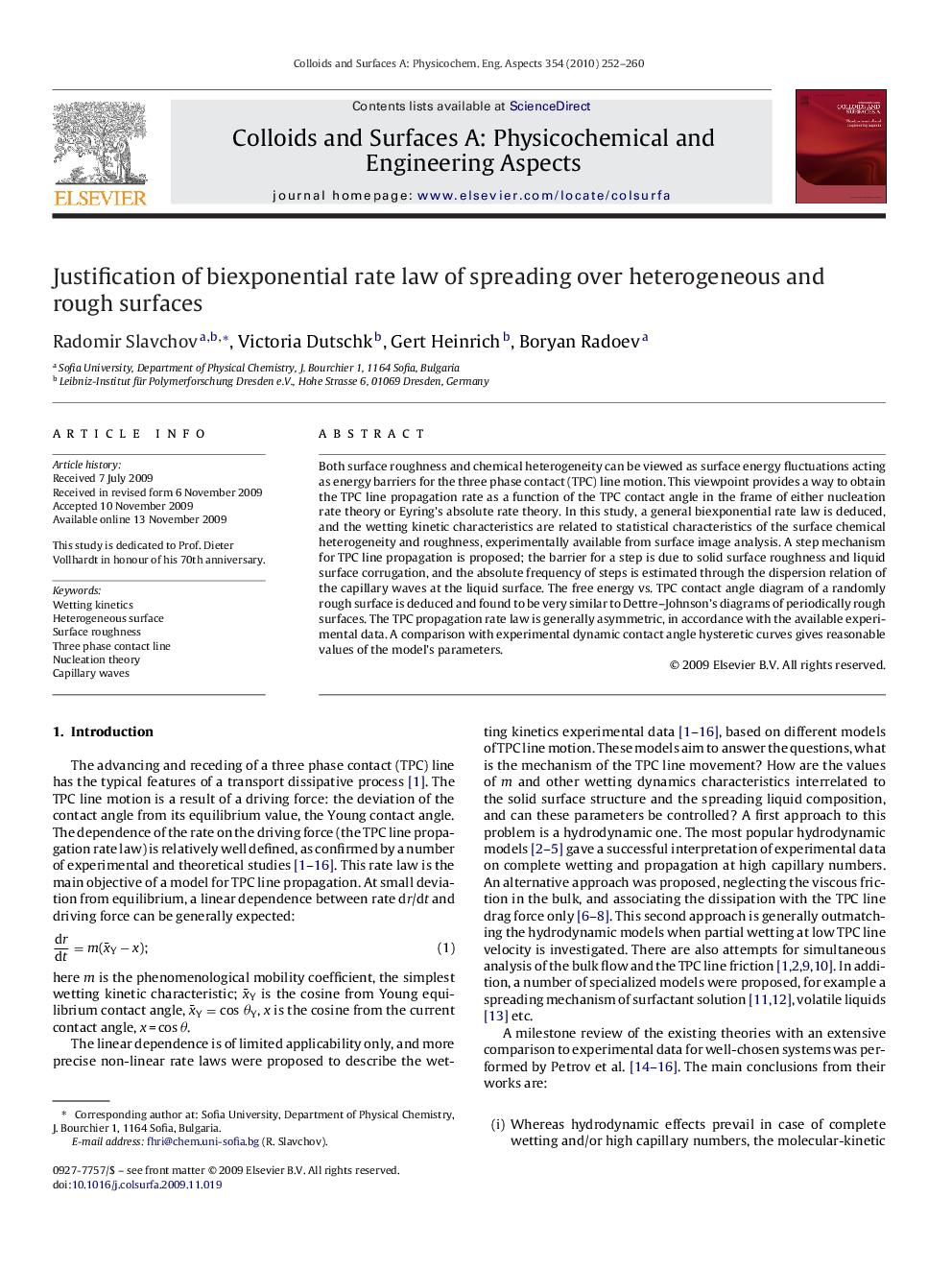| Article ID | Journal | Published Year | Pages | File Type |
|---|---|---|---|---|
| 595630 | Colloids and Surfaces A: Physicochemical and Engineering Aspects | 2010 | 9 Pages |
Abstract
Both surface roughness and chemical heterogeneity can be viewed as surface energy fluctuations acting as energy barriers for the three phase contact (TPC) line motion. This viewpoint provides a way to obtain the TPC line propagation rate as a function of the TPC contact angle in the frame of either nucleation rate theory or Eyring's absolute rate theory. In this study, a general biexponential rate law is deduced, and the wetting kinetic characteristics are related to statistical characteristics of the surface chemical heterogeneity and roughness, experimentally available from surface image analysis. A step mechanism for TPC line propagation is proposed; the barrier for a step is due to solid surface roughness and liquid surface corrugation, and the absolute frequency of steps is estimated through the dispersion relation of the capillary waves at the liquid surface. The free energy vs. TPC contact angle diagram of a randomly rough surface is deduced and found to be very similar to Dettre-Johnson's diagrams of periodically rough surfaces. The TPC propagation rate law is generally asymmetric, in accordance with the available experimental data. A comparison with experimental dynamic contact angle hysteretic curves gives reasonable values of the model's parameters.
Keywords
Related Topics
Physical Sciences and Engineering
Chemical Engineering
Colloid and Surface Chemistry
Authors
Radomir Slavchov, Victoria Dutschk, Gert Heinrich, Boryan Radoev,
